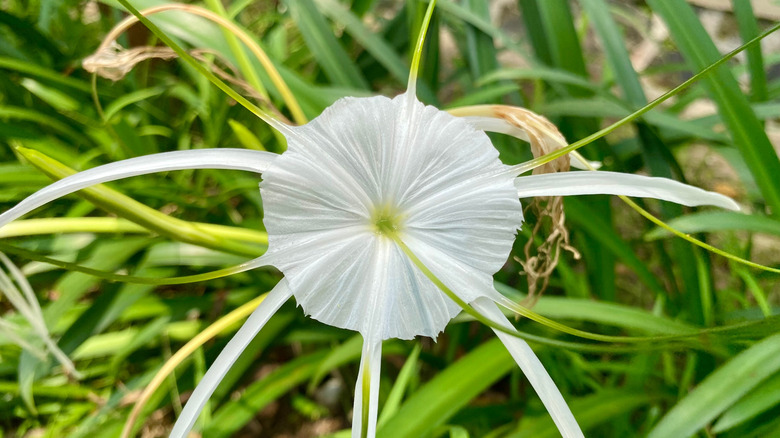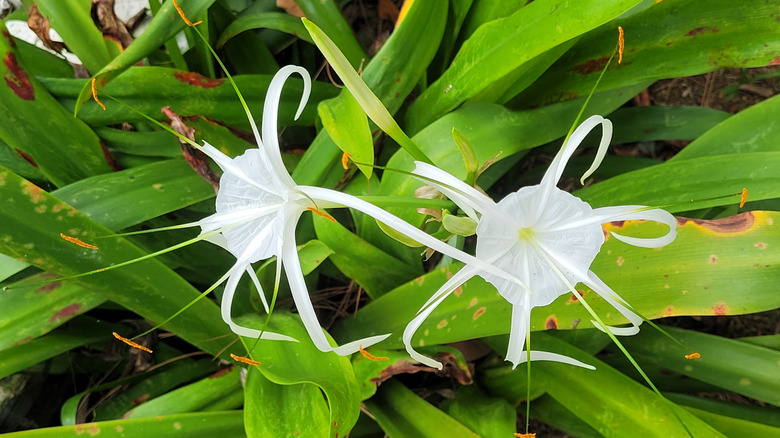Prevent Spider Lily Bulbs From Root Rot With These Essential Gardening Tips
We may receive a commission on purchases made from links.
Spider lilies (Hymenocallis littoralis) are perennial flowers that grow best in zones 10a and 11, although they prefer the latter. Originally discovered near the coast in the southeast of the United States, the spider lily earned its name from its appearance. The bulbs produce a flower that blooms mid to late summer or early fall with long petals that curve away from the central flower, resembling a spider's web. The best time to plant these spider lily bulbs in the ground is the spring or fall, depending on your climate. But before you put them in the soil, note that these flowers are particularly susceptible to root rot. Luckily, you can prevent this often-deadly disease by choosing a spot that drains well and following recommended watering guidelines.
Maybe you've heard of it but don't know exactly what root rot is or how to deal with it. Root rot is literally the process of roots rotting due to either a fungus or mold that attacks the plant at its core. Overwatering or poorly draining soil leaves roots steeped in water for an extended period, opening the door to this disease. While root rot can be treatable in some cases, prevention is the best way to protect your spider lily bulbs from this fate.
How and where to plant spider lily bulbs
Since spider lilies are native to the coast, it is no surprise that these bulbs prefer sandy or loamy, well-drained soil. Loam is a type of soil that combines clay, sand, and silt. Beach-side gardens are great for this flower, and these lilies also work perfectly in your cut flower garden patch. Choose a location that does not have standing water and receives part to full sun. Proper watering is also essential to prevent root rot. While too much water can lead to rot, bulbs also need consistent moisture to develop into plants and eventually flower, so you want to find a happy medium.
Instead of allowing the soil containing your spider lily bulbs to dry completely, wait only until the top inch is dry before watering. The soil underneath should stay moist but well-drained and not soggy. Keep in mind that no matter the stage of your plant's growth, waterlogged soil is the enemy that could doom your spider lilies. If you're planting these bulbs in a pot, choose one with drainage holes and follow the same watering rules. Terracotta breathes well, allowing airflow, making it a good choice for spider lilies.
To ensure your bulbs haven't developed root rot and to catch suspected problems early, check your spider lilies each month and test the wetness of your soil with a meter, like the SONKIR Soil Meter, or use your finger. Signs of root rot include stunted growth, visible mold on the surface of your soil, and yellowing or browning leaf tips. Examine the roots themselves to confirm your suspicions and treat the problem immediately to possibly save your plant — remove the affected parts, fix your soil, replant your flowers, and adjust your watering schedule. Use care, and handle the plant with gloves, as both the roots and leaves are considered poisonous.

